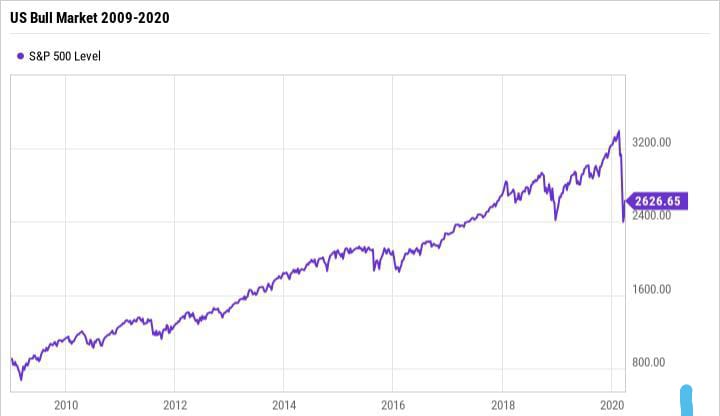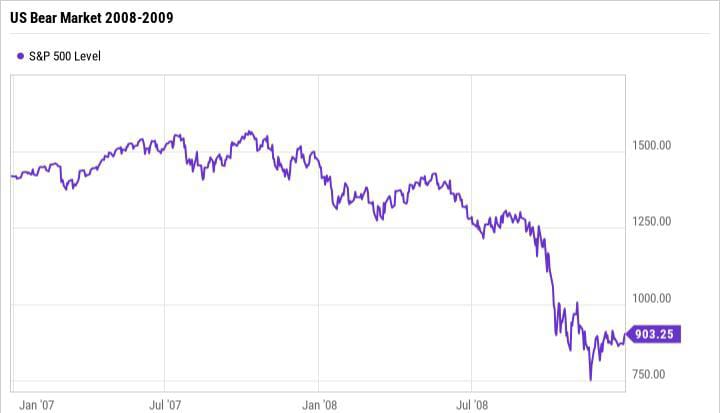The investment terms ‘bull’ and ‘bear’ markets are frequently used to determine the mood of the stock market. They are very different terms when it comes to their impact on the portfolios and the investment decisions you take. Moreover, it is very important to understand the difference between these markets while developing a plan and a diversified portfolio. With this knowledge, you can or with a help of a financial adviser can manage the market and avoid making risky and hasty decisions for your portfolio.
BULL MARKET
In this market, the stock prices have increased significantly over a while. They are highly impacted by consumer confidence. The investors usually buy and hold securities making it a buyers market. Bull markets can last for months and even in some cases for years and no one can predict the end of the bull market. The bull market takes effect when the stock prices have risen at least 20% since the last downtrend or 52 week low. The stock market has seen its share of bull markets the longest being from 2009-2020 until the pandemic hit and caused a market crash. The bull market is also said to take over when the 50 days moving average of the security or index surpasses the 200 days moving average. It is also called the ‘golden cross’.

BEAR MARKET
This market is the opposite of bull markets and the stock prices have decreased significantly over time. This market can be accredited with several factors like negative economic outlook, weak corporate earnings, etc in the case of a declining market. Investors during this period often want to sell for the safety of cash or fixed-income securities. That is the reason this is often called the seller’s market. The bear market takes effect when the stock prices fall at least 20% or more from their recent peak or 52 week high. Though the bear markets do not last as The most famous and the first bear market was the Great Depression. The recent market crash was from 2008-2009 in the housing market. The bear market is said to take over when the 50 days moving average of the security or the index is below the 200 days moving average which is also referred to as the ‘death cross’.

DIFFERENCE BETWEEN BULL AND BEAR MARKETS
Many different factors can tell whether the market is in a bull or bear state. Some of these are;
- Stock market prices – The market is constantly changing and frequently small losses and gains can offset the market creating a flattened trend. Bull and bear markets have continuously sustained periods over time and due to short changes or trends create a downward trend. Although the bull market has prevailed over the financial market and has shown great results.
- Unemployment rate changes – A declining unemployment rate is consistent with a bull market as during this time the companies are hiring and expanding. But during bear markets trend rising unemployment rate occurs and companies are forced to lower their headcounts. The rising unemployment rate continues the bear market trends as fewer people are earning wages which lead to reduced revenue for many companies.
- Change in GDP – Declining GDP shows the bear markets trend while the rising GDP shows bull markets. GDP rises when there is a rise in companies revenue, the unemployment rate is increasing companies are sluggish and the employment rate is declining to lead to fewer wages and consumer spending. Moreover, bear markets are connected to economic recessions and depressions. Depressions take place when the GDP decreases by at least 10% and the downtrend lasts more at least 2 years whereas recession occurs when the GDP decreases for constantly two quarters.
- Prevailing interest rate – Lower interest rates are generally associated with bull markets as it makes the businesses more affordable to borrow and grow whereas higher interest rates usually accompany bear markets which tend to slow the companies’ growth.
INVESTING IN BEAR AND BULL MARKETS
As there are many differences between bear and bull markets making investment decisions are also very different. Like, growth stocks are better buy-in bull markets whereas value stocks tend to perform well in bear markets. Investing in equities mainly depends on the time horizon. If you do not need the money for the long term then it matters very little whether the market is bullish or bearish. As a buy and hold investor the focus should not be the prevailing market conditions but the security price and the time it is to invest for. Another way to finance the rising prices of the bull market is to buy stocks at their low and sell them before they reach their all-time high. In a bear market trend, it is a healthy decision to direct some of your money to fixed income securities since there is more loss potential investing in the equities and you would likely incur more loss at the initial purchase. Moreover, the stock market can be bullish even if bear markets are prevailing in other asset classes and vice versa. So, if the financial market is bullish and you are concerned about price inflation it is best to invest in gold or real estate. And if the stock market is bearish you can think of investing in bonds or even liquidating your portfolio. The best strategy would be through financial planning and long-term strategic asset allocation. Taking advice from a financial manager would help to create a diversified investment portfolio and avoid taking a risk or take decisions based on emotions.
In conclusion, the stock market has experienced many growths ( bull markets) and decline (bear markets) periods along with bumps and market corrections but has overall performed well. But past results can not guarantee future performance thus understanding the market and creating a diversified long-term portfolio with little risks can help to sustain success